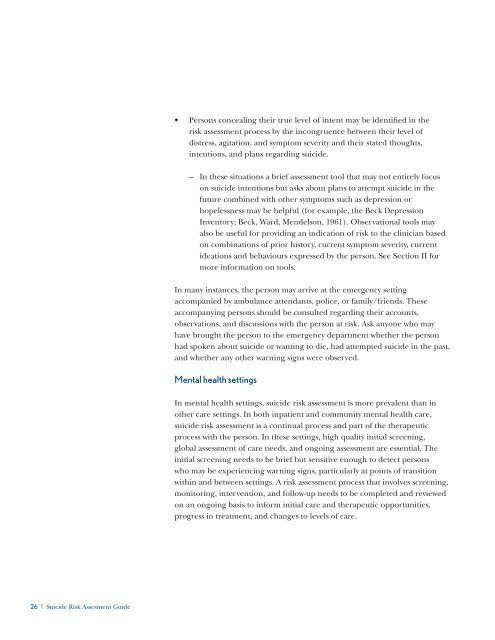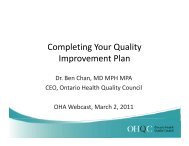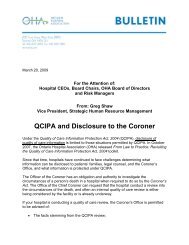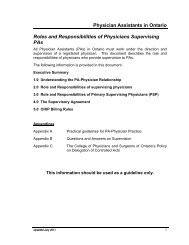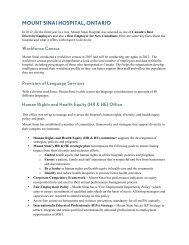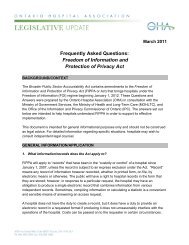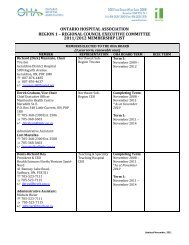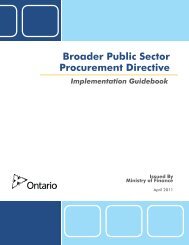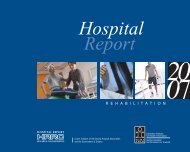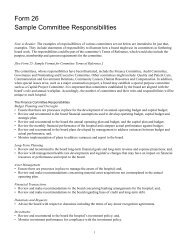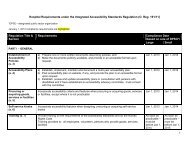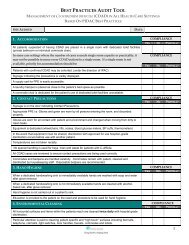Suicide Risk Assessment Guide - Ontario Hospital Association
Suicide Risk Assessment Guide - Ontario Hospital Association
Suicide Risk Assessment Guide - Ontario Hospital Association
You also want an ePaper? Increase the reach of your titles
YUMPU automatically turns print PDFs into web optimized ePapers that Google loves.
26 I <strong>Suicide</strong> <strong>Risk</strong> Assesment <strong>Guide</strong><br />
• Persons concealing their true level of intent may be identified in the<br />
risk assessment process by the incongruence between their level of<br />
distress, agitation, and symptom severity and their stated thoughts,<br />
intentions, and plans regarding suicide.<br />
– In these situations a brief assessment tool that may not entirely focus<br />
on suicide intentions but asks about plans to attempt suicide in the<br />
future combined with other symptoms such as depression or<br />
hopelessness may be helpful (for example, the Beck Depression<br />
Inventory; Beck, Ward, Mendelson, 1961). Observational tools may<br />
also be useful for providing an indication of risk to the clinician based<br />
on combinations of prior history, current symptom severity, current<br />
ideations and behaviours expressed by the person. See Section II for<br />
more information on tools.<br />
In many instances, the person may arrive at the emergency setting<br />
accompanied by ambulance attendants, police, or family/friends. These<br />
accompanying persons should be consulted regarding their accounts,<br />
observations, and discussions with the person at risk. Ask anyone who may<br />
have brought the person to the emergency department whether the person<br />
had spoken about suicide or wanting to die, had attempted suicide in the past,<br />
and whether any other warning signs were observed.<br />
Mental health settings<br />
In mental health settings, suicide risk assessment is more prevalent than in<br />
other care settings. In both inpatient and community mental health care,<br />
suicide risk assessment is a continual process and part of the therapeutic<br />
process with the person. In these settings, high quality initial screening,<br />
global assessment of care needs, and ongoing assessment are essential. The<br />
initial screening needs to be brief but sensitive enough to detect persons<br />
who may be experiencing warning signs, particularly at points of transition<br />
within and between settings. A risk assessment process that involves screening,<br />
monitoring, intervention, and follow-up needs to be completed and reviewed<br />
on an ongoing basis to inform initial care and therapeutic opportunities,<br />
progress in treatment, and changes to levels of care.


